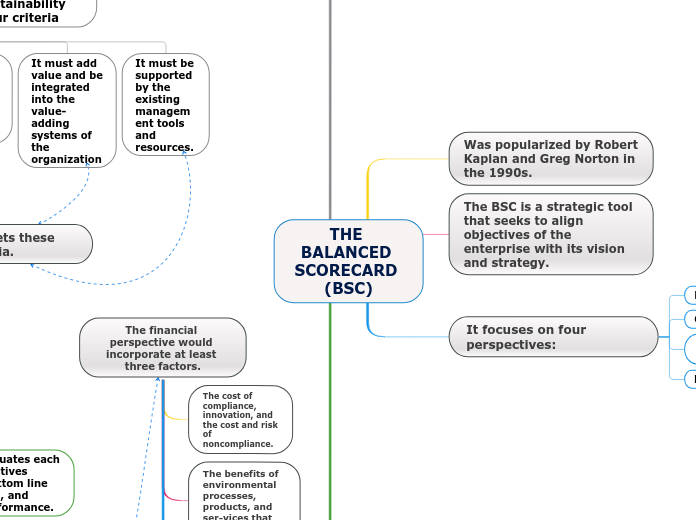THE BALANCED SCORECARD (BSC)
INCORPORATING SUSTAINABILITY INTO THE BSC
Any attempt to measure success in sustainability must meet four criteria
It must address the triple bottom line of sustainability: economic, social, and environmental performance
It must have performance measures that can be clearly understood and communicated
It must add value and be integrated into the value-adding systems of the organization
It must be supported by the existing management tools and resources.
HOW TO INCORPORATE SUSTAINABILITY INTO THE BSC.
Three approaches have been utilized
The first approach integrates environmental and social aspects into the existing perspectives
This approach does not appear to have gained much use in practice
The second approach adds an additional perspective to the existing four in order to incorporate environmental and social aspects
Referred to as the “nonmarket perspective,” this approach is seen as necessary because environmental and social issues are not fully integrated into the market exchange process.
The third approach develops a separate scorecard, which is referred to as the sustain-ability balanced scorecard (SBSC).
This approach evaluates each of the four perspectives along the triple bottom line of economic, social, and environmental performance.
Was popularized by Robert Kaplan and Greg Norton in the 1990s.
The BSC is a strategic tool that seeks to align objectives of the enterprise with its vision and strategy.
It focuses on four perspectives:
FINANCIAL
CUSTOMER
INTERNAL BUSINESS PROCESSES
LEARNING AND GROWTH
